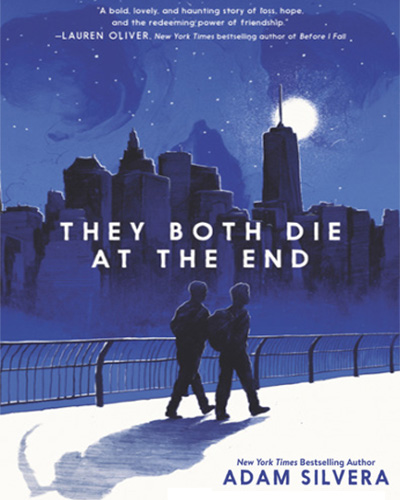
| Language | From $0.00 |
| Release Date | September 5, 2017 |
| Genre | Young Adult |
| Author | Adam Silvera |
| File Size | Quill Tree Books |
| Rating | (4.13) |
“They Both Die at the End” takes place in a world where a mysterious company called Death-Cast can predict the exact day a person will die. People receive a phone call in the early hours of the day they are slated to die, giving them a chance to make the most of their remaining hours.
In this world, an app called Last Friend has been created to help people find someone to spend their final day with. The app connects people who are about to die, allowing them to form meaningful connections and experience one last adventure before their lives end.
The novel follows the stories of Mateo Torrez and Rufus Emeterio, two teenagers who have just received their Death-Cast calls. Through the Last Friend app, they find each other and embark on a journey to make the most of their final day, all while grappling with their own fears, regrets, and the reality of their impending deaths.
One of the themes of “They Both Die at the End” is the inevitability of death. Despite knowing their fate, Mateo and Rufus still struggle to accept their looming demise. This aspect of the story forces readers to confront their own mortality and consider how they would react in a similar situation, making the novel a deeply emotional and thought-provoking read.
The book also explores the importance of living in the present and making the most of the time we have. As Mateo and Rufus race against the clock, they learn to appreciate the small moments and embrace new experiences. This message encourages readers to cherish the present and live life to the fullest, even when faced with the uncertainty of the future.
At its core, “They Both Die at the End” is a story about the power of connection and friendship. As Mateo and Rufus spend their final hours together, they form a bond that transcends their circumstances, providing each other with the strength to face their fears. The novel serves as a reminder of the importance of human connection and the profound impact that even brief encounters can have on our lives.
Adam Silvera’s writing style is engaging, making it easy to become invested in the story. The prose is descriptive and emotive, allowing readers to empathize with the characters and feel the weight of their emotions. The dialogue is authentic, and the author’s use of humor and wit provides some much-needed levity amidst the heavier themes.
The novel is told through alternating perspectives, switching between the viewpoints of Mateo and Rufus. This narrative structure provides readers with a deeper understanding of both characters, as well as their individual experiences and emotions. The alternating perspectives also add an element of suspense, as readers are kept guessing about the fate of the characters until the very end.
The pacing of “They Both Die at the End” is well-executed, with the narrative unfolding over the course of a single day. This structure adds a sense of urgency to the story, as Mateo and Rufus try to make the most of their remaining hours. The book also balances quieter, introspective moments with action-packed scenes, providing a satisfying and engaging reading experience.
One criticism of the novel is the predictability of the ending. As the title suggests, readers are aware from the outset that both protagonists will die. This knowledge can make certain plot points feel inevitable, potentially diminishing the emotional impact of the story for some readers.
Another point of contention is the portrayal of the LGBTQ+ community in the novel. While some readers appreciate the representation, others argue that certain aspects of the story, such as the characters' relationships, are not fully fleshed out or adequately explored.
“They Both Die at the End” is a poignant and thought-provoking journey that will stay with readers long after they have finished the book. Its exploration of love, loss, and the human condition is both moving and memorable.
This novel is a must-read for fans of contemporary young adult fiction, particularly those who enjoy emotionally charged stories that delve into the complexities of life, death, and the connections that bind us together.